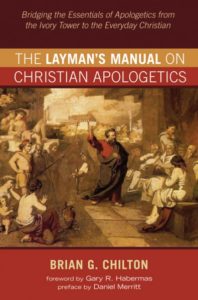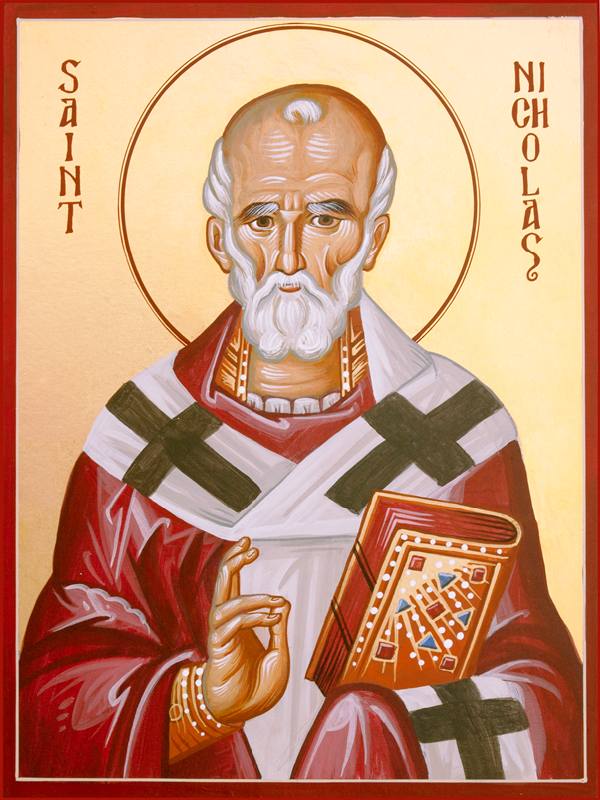By: Brian G. Chilton | December 9, 2019
It may surprise you to discover that there really is a Santa Claus! The Santa Claus figure was taken from a genuine person of history. His name was Saint Nicholas of Myra. Earlier on BellatorChristi.com, I posted an article on this issue. However, I thought it necessary to update the article, especially now that my studies are focused on the Patristic Fathers which would include Nicholas of Myra.
Nicholas is one of the more popular saints in the Greek and Roman churches. However, not much is known about him historically. All evidence of him is scant at best. Nicholas is believed to have been born in the ancient Lycian seaport of Patara in Asia Minor around 280. As a young man, Nicholas journeyed to Israel and Egypt to study alongside the Desert Fathers, who may have included Saint Anthony the Great (c. 251–356) and Saint Abba Pachomius the Great (c. 292–348). Upon his return some years later, Nicholas was ordained as the Bishop of Myra, which is now known as Demre, a coastal town in modern-day Turkey. It is said that Emperor Diocletian imprisoned Nicholas before Constantine rose to power, legalizing Christianity in the Roman Empire, and releasing Nicholas and other Christians who had been imprisoned for their faith. During Nicholas’s time in prison, he was beaten numerous times but maintained his strong Christian convictions despite the torture he suffered.
Two acts of Nicholas made him legendary. First, Nicholas is noted for his great generosity. Nicholas came from a wealthy family and maintained a position of financial influence throughout his life. However, it is said that Nicholas walked by the home of a father who fell on hard times. The father and his family were so impoverished that his three daughters would be forced into slavery or prostitution to earn money to keep the family alive. While everyone was asleep, Nicholas reached through their window and tossed a bag of gold into the man’s shoes which were drying by the fireplace. The money would pay the dowry for the first daughter. No one in the household knew how the money was placed into the shoe. On the second night, Nicholas did the same to pay the dowry for the second daughter. On the third night, as Nicholas tossed the third bag of gold to pay for the third daughter’s dowry, a member of the household noticed that Nicholas was the benefactor and thanked him for his great generosity. Saint Nicholas was known to have secretly given gifts to the children of his community. It is said that Nicholas wore red robes and donned a long white beard (CatholicNewsAgency.com) and that children of the area would place shoes or stockings beside the fireplace in hopes that Nicholas would provide a gift to them.
Second, Nicholas is known for this theological faithfulness. While his name does not appear on the earliest lists, later lists include Nicholas of Myra as being one of the attendants of the Nicaean Council of 325. Like many of the aspects of Nicholas’s life, the following story is difficult to prove with any degree of certainty. The main area of focus for the Council of Nicaea was to decide whether Christ was eternally God, as argued by Athanasius of Alexandria, or if he was the first created being, as contended by Arius of Alexandria. During the heat of the discussion, Nicholas is said to have knocked out Arius of Alexandria. Nicholas did not approve of the heretical claims of Arius, so he took Arius into his own hands. Remember, it was Christ who helped Nicholas through the tortures he endured in prison. Someone saying something objectional about his Jesus transformed the otherwise generous, mild-mannered saint into a heavy-handed pugilist.
Nicholas died on December 6, 343 in Myra. The anniversary of his death became a day of remembrance and celebration for a man who held great orthodoxy (right beliefs) and orthopraxy (right actions). His feast day was later integrated into Christmas celebrations. Rather than claiming that Santa Claus is some pagan entity, the real Saint Nicholas is a reminder of what the Christian life should be as Nicholas lived out his faith (with the exception of knocking out heretics). While it is easy for us to live self-absorbed lives and to become bitter over things that may not have gone our way, it is much better to show the love of Christ by giving generously to others in need. The real Santa Claus, derived from Saint Nicholas, was a man of great faith and generosity. This Christmas season, let us also become people who focus on the meaning of the season while showing the love of Christ to others wherever we can.
Sources
Cross, F. L., and Elizabeth A. Livingstone, eds., The Oxford Dictionary of the Christian Church. Oxford; New York: Oxford University Press, 2005, p. 1155.
http://www.newadvent.org/cathen/11063b.htm
https://www.catholicnewsagency.com/saint/st-nicholas-of-myra-75
https://www.history.com/topics/christmas/santa-claus
https://www.stnicholascenter.org/who-is-st-nicholas
About the Author

Brian G. Chilton is the founder of BellatorChristi.com, the host of The Bellator Christi Podcast, and the author of the Layman’s Manual on Christian Apologetics. He received his Master of Divinity in Theology from Liberty University (with high distinction); his Bachelor of Science in Religious Studies and Philosophy from Gardner-Webb University (with honors); and received certification in Christian Apologetics from Biola University. Brian is enrolled in the Ph.D. program in Theology and Apologetics at Liberty University and is a member of the Evangelical Theological Society and the Evangelical Philosophical Society. Brian has been in the ministry for nearly 20 years and serves as the Senior Pastor of Westfield Baptist Church in northwestern North Carolina.
https://www.amazon.com/Laymans-Manual-Christian-Apologetics-Essentials/dp/1532697104
© 2019. BellatorChristi.com.






[…] Source: The Genuine Saint Nicholas […]